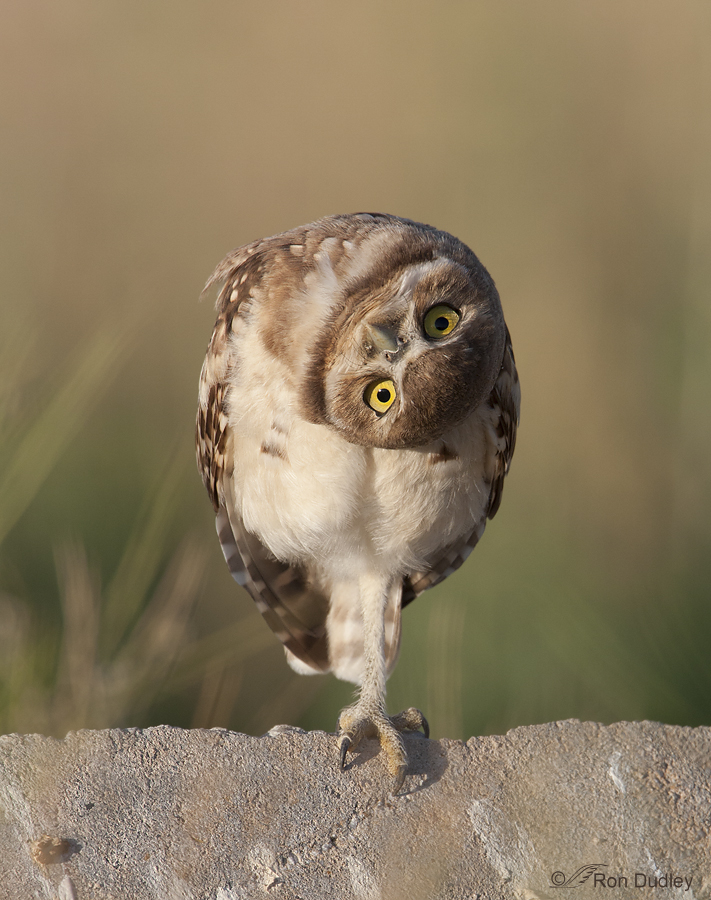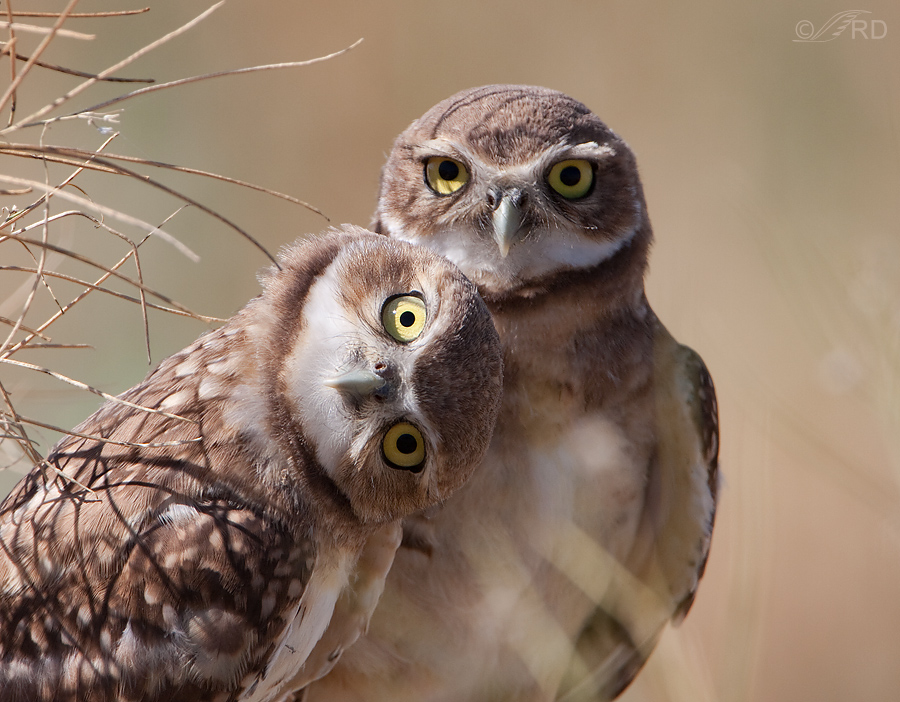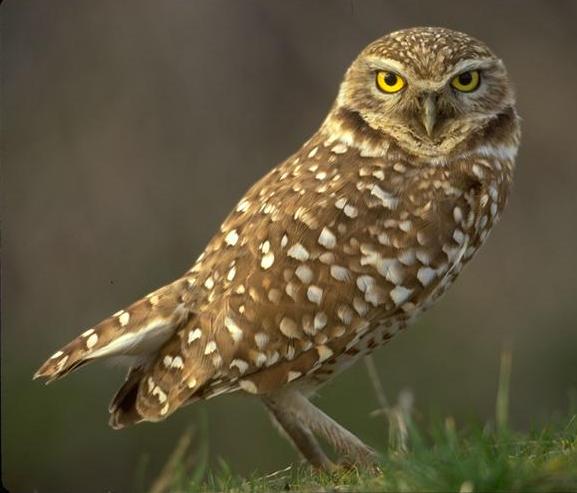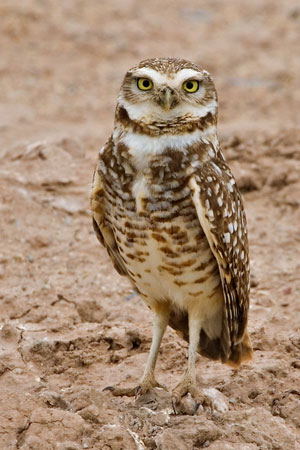
Athene cunicularia
SUBFAMILY
Surninae, Tribe Surniini
TAXONOMY
Strix cunicularia Molina, 1782, Chile. Nineteen subspecies are
recognized.
OTHER COMMON NAMES
French: Chevкche des terriers; German: Kaninchenkauz; Spanish:
Mochelo de Madriguera.
PHYSICAL CHARACTERISTICS
7.5–9.8 in (19–25 cm). Female, 4.2–8.8 oz (120–250 g). Male,
4.6–6.5 oz (130–185 g). This owl has a round head with an
oval, buff to white facial ruff, yellow eyes, and a white chin and
throat. Upperparts are brown with buff to white spots on the
crown of the head, back, and shoulders. Underparts are buff to
white with brown bars. The tail is short and the long legs are
covered with white to buff feathers.
DISTRIBUTION
Southwest Canada to El Salvador, Florida, Bahamas, Cuba, and
Isle of Pines; Venezuela, Colombia, Ecuador, Bolivia, southern
Brazil to Tierra del Fuego.
HABITAT
Arid, dry, open plains, deserts, savanna, farmlands, roadsides,
and golf courses.
BEHAVIOR
Very active during the day. Lives in loose colonies. Sentries
give alarm calls if predators are seen. Uses burrows for roosting
and hiding as well as breeding. Northern races migrate
south, southern races are sedentary.
FEEDING ECOLOGY AND DIET
Mainly insects, also small mammals and small birds. Hunts on
the ground, running and hopping after insects. Also will hover
over tall grass cover and will take prey in flight on occasion.
REPRODUCTIVE BIOLOGY
Nests underground; will dig its own burrow or use the burrow
of ground-dwelling mammals. Lays six to 11 eggs. Incubation
is 28–30 days. Young fledge after about 44 days. First breeding
at one year of age.
CONSERVATION STATUS
Not globally threatened, although listed as Endangered in
some northern United States and some Canadian provinces.
Declining over some parts of its range and expanding over others.
SIGNIFICANCE TO HUMANS
None known.
Other popular Animals
Photo Gallery of - Burrowing owl




 Animalia Life
Animalia Life